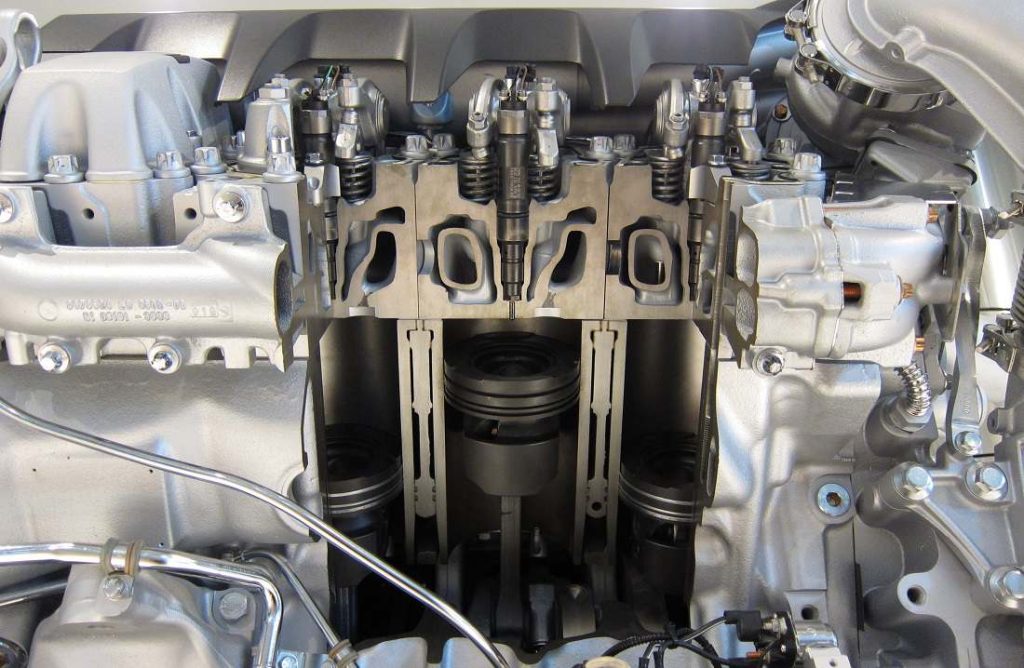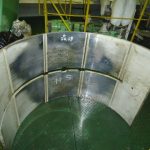The fuel injection arrangement shown below is for a large two stroke marine diesel engine used on ships. High pressure fuel from the fuel pump is led through a double skinned pipe to a distribution block close to the cylinder head and then through three double skinned pipes to the equally spaced fuel injectors fitted in the cylinder cover.

The fuel fuel injectors are located by studs or dowel pins to ensure the correct position of the nozzle. There are fuel oil circulation lines connected between fuel injectors and fuel oil return line as shown in the figure. This helps to keep injectors at a higher temperature when main engine is idle.
Importance of Fuel Injection Arrangement
Normal crosshead engines fitted with a central exhaust valve utilize uniflow scavenging. Because of the centrally placed exhaust valve, three fuel injectors are fitted circumferential around the cylinder head. The atomizing nozzles, which are different in design to those of a centrally placed fuel injector. These nozzles are designed to inject the fuel into the air swirl without contacting the liner surface. A single fuel injector could not be used because it would result in poor air fuel mixing with poor combustion and localized high temperatures, although some engines use two injectors per cylinder. Due to the tangential design of the scavenge ports, the charge air rotates around the cylinder axis in an action known as swirl which promotes better mixing of the fuel from the three injectors and air. The overall result is uniform temperature distribution, more efficient combustion, and lower exhaust valve temperatures.
Fuel Oil Leak Off Arrangement
Sheathed or double skinned fuel pipes between the fuel pump and injector are used as a safety measure to protect against the risk of fire in the case of a fuel pipe failure. They are a requirement for engines running under UMS conditions. To be effective, they must be correctly fitted and sealed against external leakage at fuel pump and injector. Refer to the illustration below for the details.

A leak off at the high pressure fuel pipe or ends from the annular space is led through a leak off line to an alarm pot or leak off tank and then to the fuel oil drain tank. Outer sheath of the pipe prevents spillage of leak off oil to the surroundings. This leak off tank or alarm pot can be general to all units or individually fitted to each cylinder. Small amount of leakages are led through an orifice (small opening) to the fuel oil drain tank. When the leakages are high, flow through the orifice will not be sufficient to drain all the oil. Now level of the leak off tank rises, which lifts the float fitted in the leak off tank. The float is connected to an alarm circuit. Should the alarm operate, the engineer must identify the leaking pipe and replace as necessary.



Comments are closed